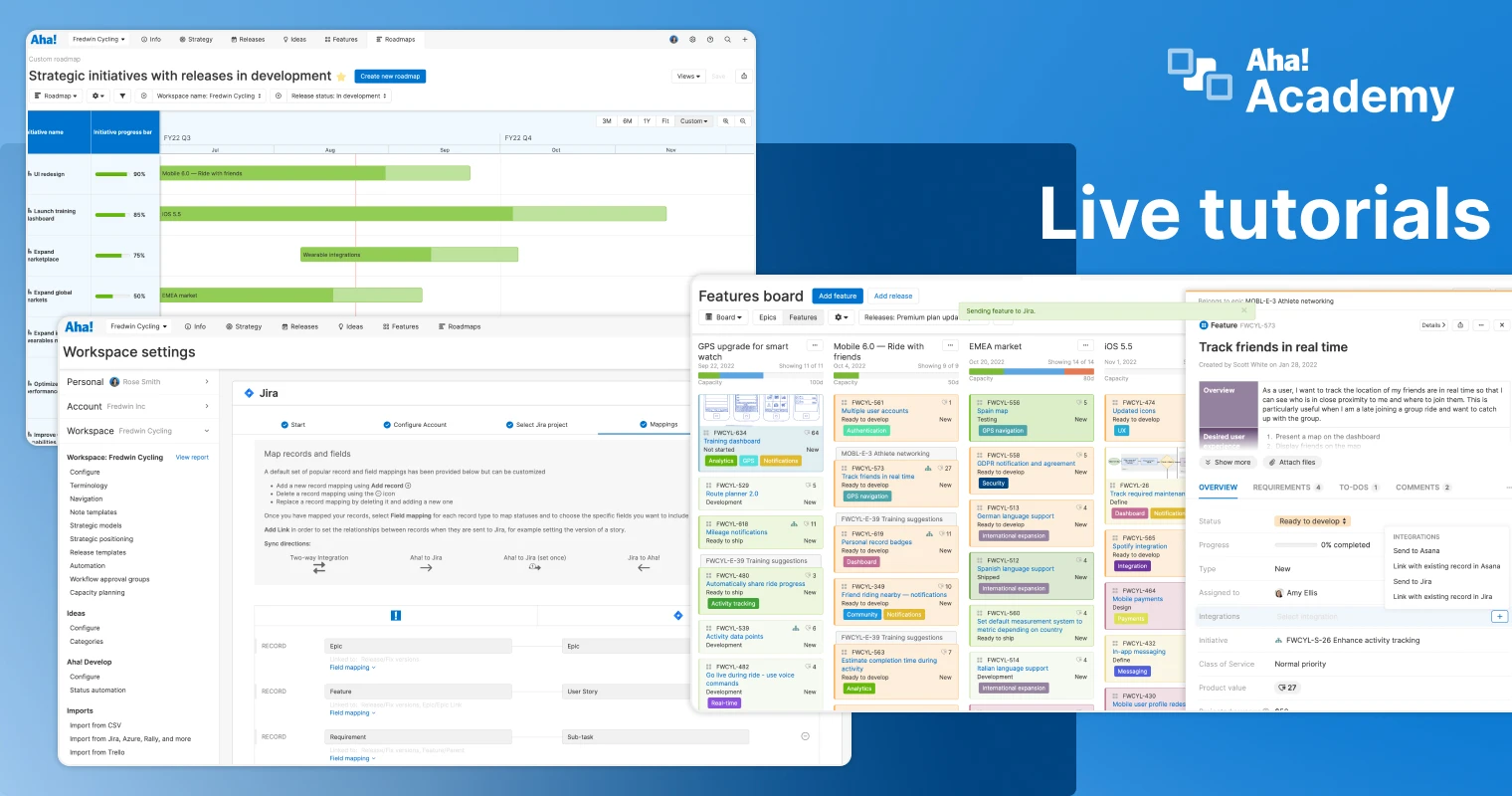
Link Aha! records with issues in Jira so your engineering team has a clearly prioritized backlog to work against.
Aha! Tutorial Highlights: How To Integrate Jira With Aha! Roadmaps
Successful product teams are powered by great strategy and plans. This is why we offer product management training through Aha! Academy and regularly host live tutorials — helping you use Aha! software to build better products. Of course we hope you can attend our tutorials live — it is the best way to learn from our product experts and ask questions in real time. You can also visit our Knowledge Base to brush up on recent tutorial topics.
This month, Aha! experts Perry Hurtt and Erik Johnson covered how to integrate Aha! Roadmaps and Jira.
Read on (and watch the recording) to learn how to set up your integration and keep information flowing smoothly between systems.
Sign up to hear about the next live tutorial
Millions of records are synchronized from Jira back to Aha! Roadmaps. That is a lot of webhook updates in one day. Many of our customers use our bi-directional integration with Jira to keep product and engineering teams aligned on what need to get done and when. Product management defines strategy, plans, and roadmaps in Aha! Roadmaps. Releases and features are then sent to Jira for development. And as the engineering team logs work done in Jira, product management sees the progress back in Aha! Roadmaps.
Senior Product Concierge Manager and Aha! Academy instructor Perry Hurtt has helped hundreds of customers with their integrations, while Erik Johnson manages the integration how-to articles in the Aha! knowledge base. As we like to joke on our team, no question about Jira is too scary for Perry. (Seriously, he has covered them all.) So follow his best practices in this tutorial, and you will be set up for integration success.
Manage work effectively across different systems
Let's start with the fundamentals of the integration. When connecting Aha! Roadmaps to Jira, it is important to consider how you intend work to flow between the systems. Most teams plan in Aha! Roadmaps first, then send prioritized work to their development tool where sprint planning happens. You can also decide which information gets sent from one tool to the next and back.
Watch Perry explain considerations for managing your integration
Map fields between systems
Onward to the mappings — the heart of your integration setup. You can set field mappings between records and specify the direction the updates should flow. For example, you can link epics, features, and requirements in Aha! with epics, user stories, and subtasks in Jira. And you can also create integration templates to streamline workflows.
See Perry create mappings between Jira and Aha! Roadmaps
Monitor product development progress
Now the beauty of the two-way integration really kicks in. As the development team completes work in Jira, product managers get visibility in Aha! Roadmaps. Features updated or work logged in Jira syncs back to the relevant fields in Aha! Roadmap. You can report on progress with confidence — knowing the data is fresh.
Learn how to build a progress report that stays up-to-date automatically
Better visibility across teams means you can spend less time tracking down progress updates and more time delivering great work.
Now, the reality is that it is a powerful integration, but it still involves two tools with their own nuances. That is why you might prefer integrating Aha! Roadmaps with Aha! Develop instead — for a truly unified product development environment. Perry briefly demonstrates the seamless integration at the end of the tutorial. If you are interested in learning more, take a peek at another one of our tutorials on using Roadmaps and Develop together. We would also be happy to schedule a live demo with your team.
Use Aha! and be happy. See for yourself — start a free 30-day trial.




